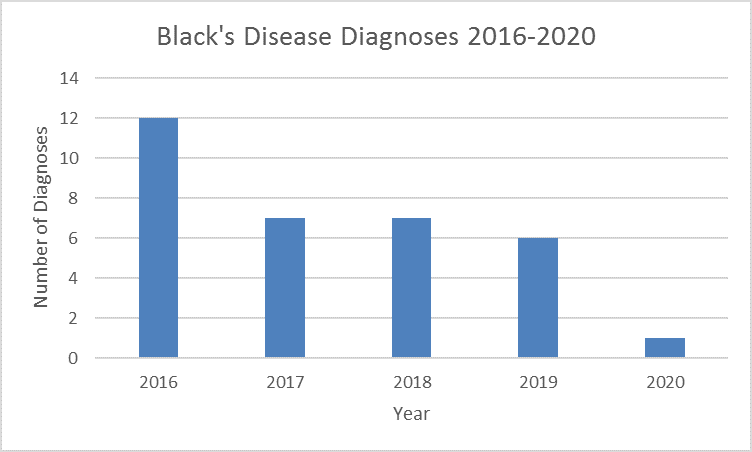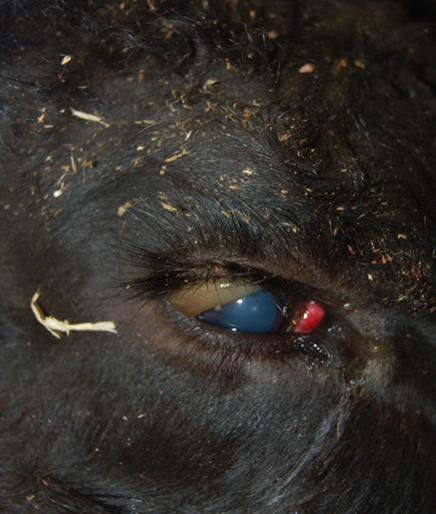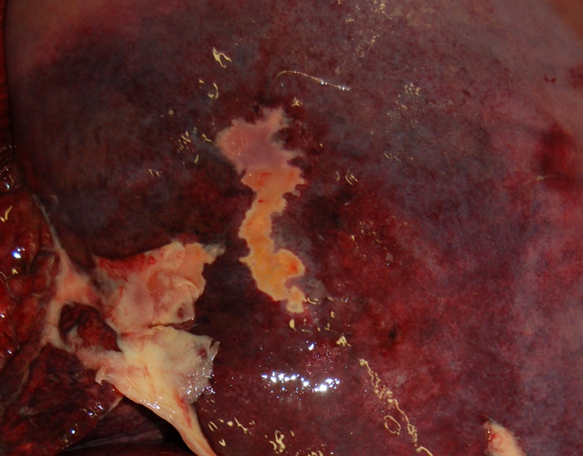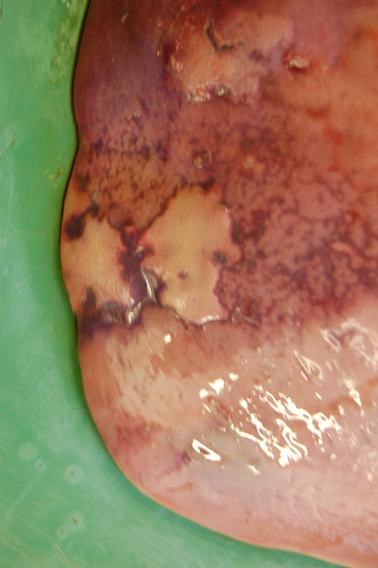Black's Disease
The most common disease presentation of most clostridial disease in cattle is sudden death. However, we are aware of a number of cases of Black’s disease over the last five years which have presented alive and have often lived long enough to be examined by a vet.
The graph below shows the number of diagnoses of Black’s disease across Scotland in the last five years. While it is not a particularly common diagnosis, it is worth being aware that all bar two of these diagnoses were from south-west Scotland, and that mortality within affected herds can be high.

Diagnoses of Black's disease in Scotland in the last 5 years.
Of these 33 cases, 17 were seen alive. The most common clinical signs were:
- Chemosis and/or vulval oedema – six cases
- Increased periods of recumbency – six cases
- Hypothermic – six cases
- Gut stasis – three cases
- Abdominal pain – two cases
- Jaundiced – two cases
- Swollen head – two cases

Chemosis in an animal affected by Black's disease.
Additionally, all had non-specific clinical signs such as being dull and lethargic or having a reduced appetite. The longest period of time from onset of clinical signs to death was three days, in an animal that had pyrexia, chemosis, jaundice and increased periods of recumbency.
- Liver enzymes provided a clue to the diagnosis in some cases, with GLDH values over 100 times the top end of the reference range in some cases
- Two thirds of the diagnoses were in suckler herds, with one third in dairy herds. Younger animals appear to be more susceptible to Black’s disease, with 70% of diagnoses in animals aged two or less
- While fluke has often been thought to be a pre-disposing factor, only 27% of affected animals had active fluke infection at the time of death
The images below show features of Black’s disease cases at postmortem:
- While lesions can be dramatic in fresh carcases, they become much more subtle with autolysis and can be easy to miss
- Diagnosis is by FAT on the fresh lesions, anaerobic culture and histopathology if necessary


Lesions in a fresh carcase (left) vs lesions in a carcase following autolysis (right).
Posted by Veterinary services on 30/04/2021
